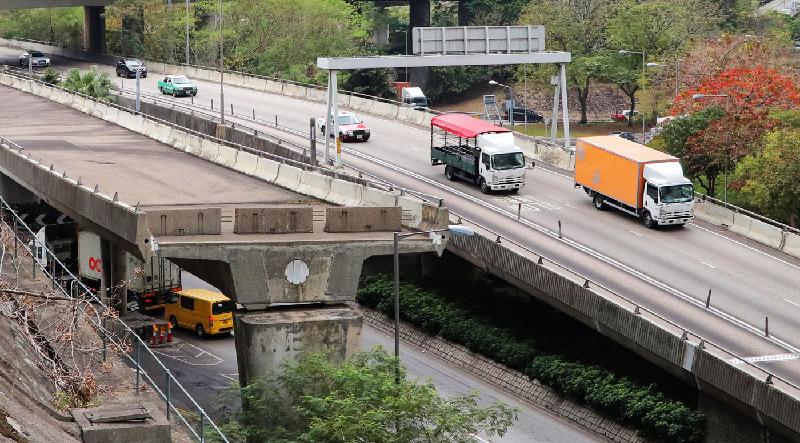The following is issued on behalf of the Office of The Ombudsman:
The Ombudsman, Ms Winnie Chiu, today (March 5) announced the completion of a direct investigation into the issue of idle flyovers and "bridges to nowhere".
In constructing a flyover, stub ends may remain on the flyover to facilitate the future expansion of the road network. In addition, where a development project is implemented in stages, adjacent sections of flyovers or stub ends for future extensions may also be built in advance to enable the connection with a new road during the next stage of the project.
According to the information provided by the Transport Department (TD), the Highways Department (HyD) and the Civil Engineering and Development Department (CEDD), there are currently 29 idle flyover sections or stub ends on 13 distributors/roads in different districts (see Annex).
The Office of The Ombudsman's investigation has revealed that in those road sections, one was completed as early as 1981. All of those road sections and stub ends have been left idle for more than 10 years, with some over 30 years. This would give an impression that the Government has not taken proactive steps in planning and developing those road sections, resulting in those flyover sections and stub ends being under-utilised.
The Office considers that the Government should regularly review the planning and development of idle road sections or stub ends to avoid them being idle for a long time. Yet, the Government currently has no mechanism to regularly conduct such review. This may result in missing the opportune time to construct new roads from the stub ends because of the changes and developments that the areas surrounding them have undergone over the past several decades.
On the other hand, the Government often receives views or objections from different stakeholders when implementing various road-work projects. It has been noted that public concerns are mainly focused on the impacts of the works project(s) on the scenery of the surrounding areas and property prices, and probably would not fully address the necessity for constructing new roads until traffic congestion occurs. If the Government delays or even shelves the construction of new roads due to the concerns and objections raised by some people, pending reconsideration when traffic congestion occurs, then the best time for its construction may have been missed. Traffic congestion in the district concerned would only be prolonged for decades or longer.
Also, the Government lacks an integrated platform for the public to easily check such information as the planning, progress and current status of all proposed road works. When a road works is a joint-department endeavour, it is even more difficult for the public to know which department they should turn to for the latest information. The Government should consider setting up an integrated information platform to facilitate public enquiries of the latest information and status of the various major road works proposed for different districts.
The Office of The Ombudsman is of the view that those idle flyover sections or stub ends do not pose any major problem per se. Yet, a stub end left idle for decades means that a road that has undergone years of planning is still awaiting construction, and that the best time for its construction might have been missed, while residents in the vicinity will continue to endure traffic congestion every day.
With the above, The Ombudsman has made three improvement recommendations to the TD, HyD and CEDD:
- convene joint-departmental meetings regularly to review the development status of all idle flyover sections or stub ends. Where warranted, the local District Councils should be consulted;
- step up lobbying efforts with the local residents and the District Councils concerned, respond specifically to the objections raised by stakeholders (in particular for those projects with stronger objections), and make recommendations and proposals for improvements or revisions promptly in a bid to gain public support for constructing the new road network; and
- set up an integrated information platform to facilitate public enquiries of information on the planning, progress and latest status of the proposed road works in various districts, and to publicise the platform.
The investigation report has been uploaded to the website of the Office of The Ombudsman at www.ombudsman.hk for public information.
Follow this news feed: East Asia






